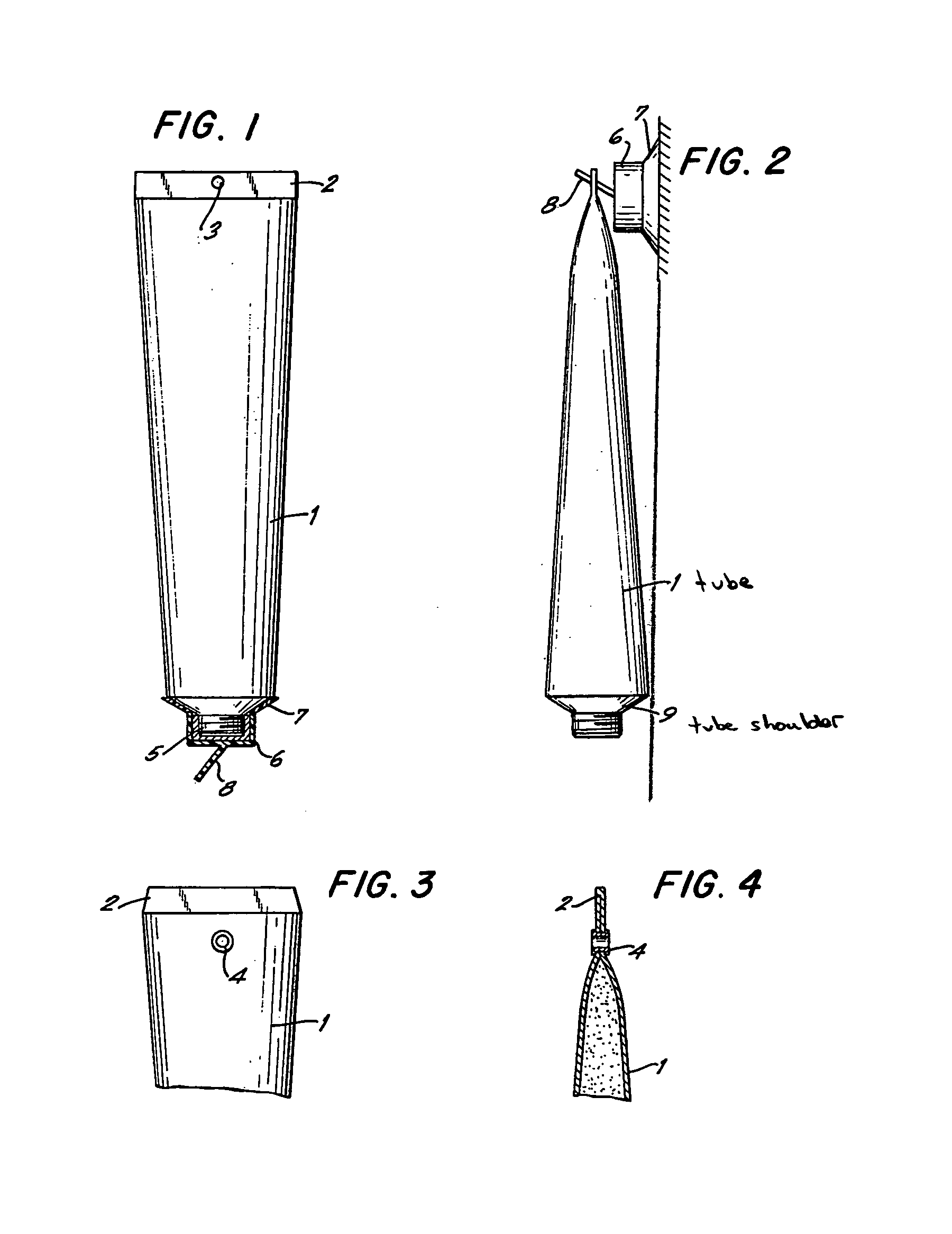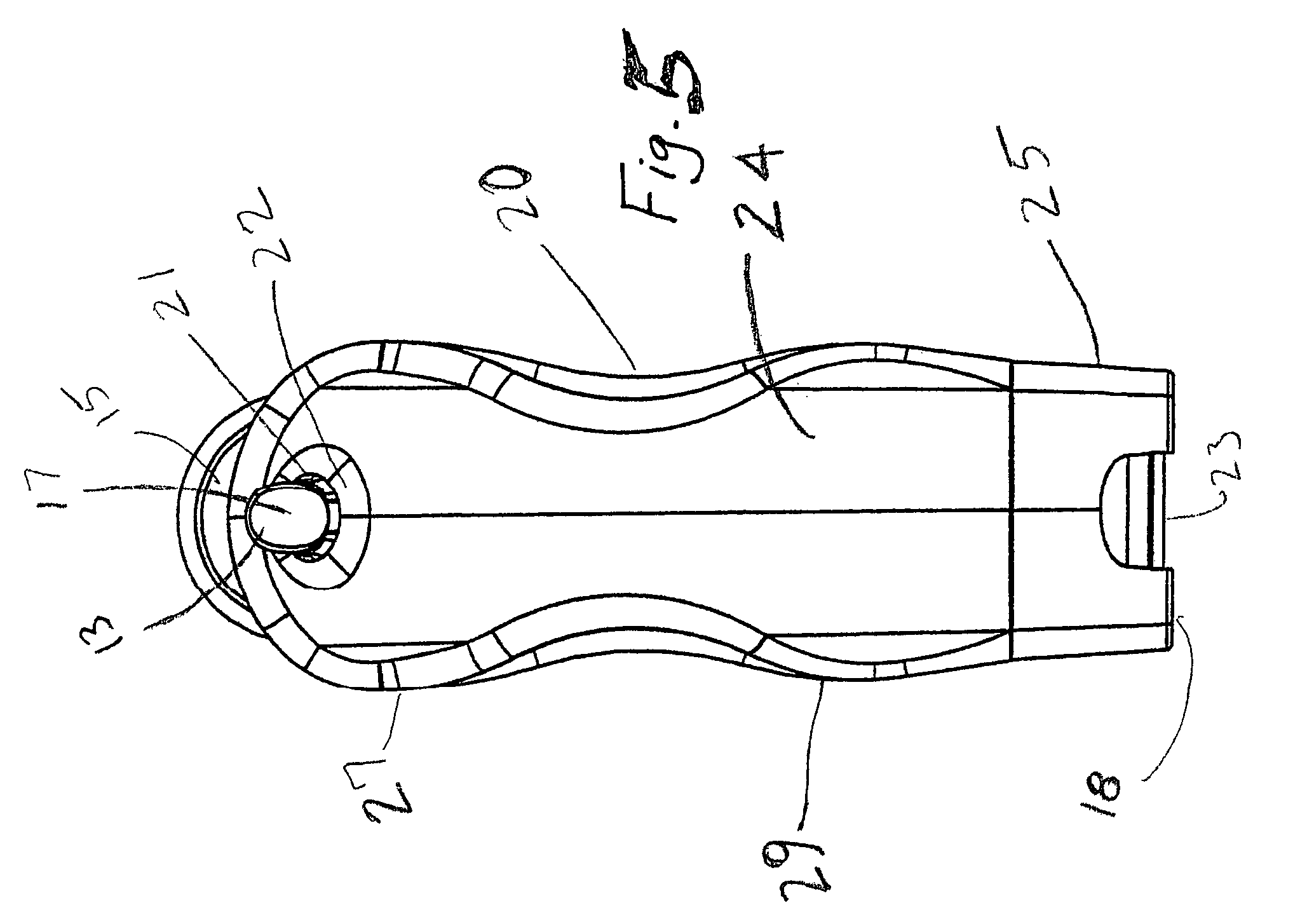Inverted dispensing system and apparatus
a dispensing system and inverted technology, applied in liquid transferring devices, pliable tubular containers, transportation and packaging, etc., can solve the problems of creating safety hazards, unsightly clutter, and spilling of container contents, and achieve the effect of minimizing the risk of spillag
- Summary
- Abstract
- Description
- Claims
- Application Information
AI Technical Summary
Benefits of technology
Problems solved by technology
Method used
Image
Examples
Embodiment Construction
[0032]Reference will now be made in detail to the presently preferred embodiments of the present subject matter, one or more examples of which are shown in the Figures. Each example is provided to explain the subject matter, and not as a limitation of the subject matter. In fact, features illustrated or described as part of one embodiment can be used with another embodiment to yield still a further embodiment. It is intended that the present subject matter cover such modifications and variations.
[0033]FIG. 1 shows an embodiment of a dispensing system 10 having an inverted resilient deformable container 20 and a hooking device 15 used to dispense fluids, especially fluids used in a shower environment, such as shampoos, conditioners, liquid soaps, lotions, or other fluids. The container 20 has an upper portion 27 and a lower portion 29. The upper portion 27 defines a through-hole 21 through the container 20 having through-hole walls 22. Through-hole 21 is formed such that fluid stays ...
PUM
 Login to View More
Login to View More Abstract
Description
Claims
Application Information
 Login to View More
Login to View More - R&D
- Intellectual Property
- Life Sciences
- Materials
- Tech Scout
- Unparalleled Data Quality
- Higher Quality Content
- 60% Fewer Hallucinations
Browse by: Latest US Patents, China's latest patents, Technical Efficacy Thesaurus, Application Domain, Technology Topic, Popular Technical Reports.
© 2025 PatSnap. All rights reserved.Legal|Privacy policy|Modern Slavery Act Transparency Statement|Sitemap|About US| Contact US: help@patsnap.com



